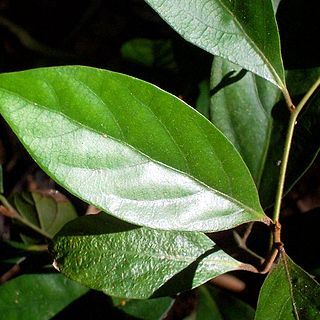Trees. Buds small, scaly. Leaves alternate, pinninerved, veins and veinlets always foveolate. Panicle axillary, inserted on base of branchlet, pedunculate, many flowered or almost reduced to a cyme. Flowers bisexual, minute. Perianth tube very short to nearly absent or campanulate; perianth lobes 6, subequal or outer 3 somewhat larger. Fertile stamens 3, of 3rd whorl, anthers slightly thickened, stalkless, 2-celled on middle part or below apex, cells extrorse; stamens of 1st and 2nd whorls absent or 6 undeveloped and reduced to glands, sometimes glands united into a fleshy ring. Staminodes of innermost whorl, absent or rarely 3. Ovary sessile; style short; stigma small. Fruit oblong, cylindric, or ovoid; fruit stalk not or nearly not dilated; perianth wholly deciduous, or slightly discoid, or nearly persistent and not deformed.

